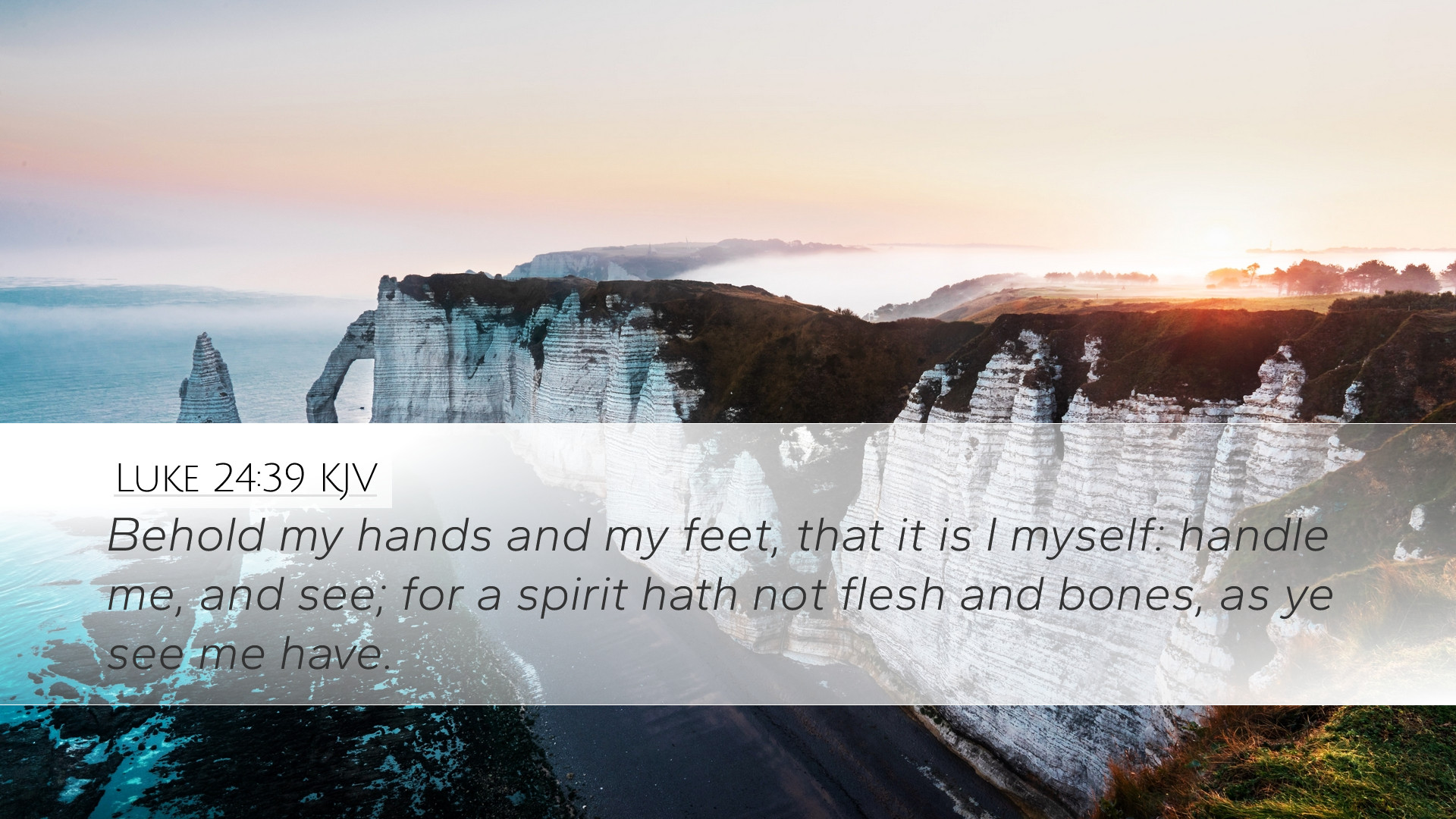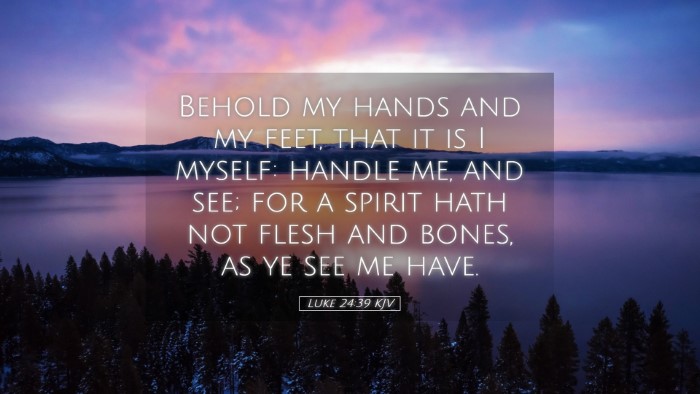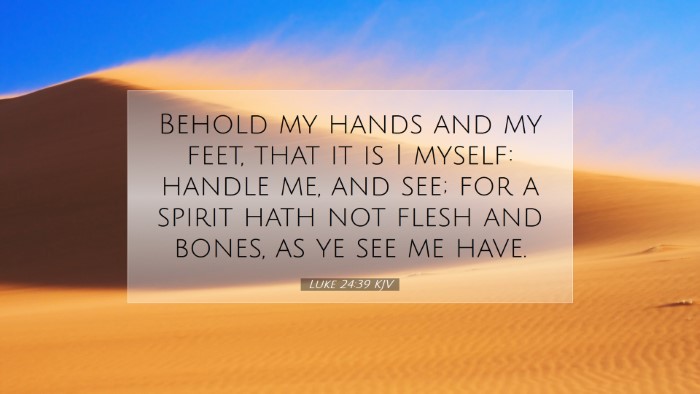Commentary on Luke 24:39
Introduction
Luke 24:39 states: "See my hands and my feet, that it is I myself: handle me, and see; for a spirit hath not flesh and bones, as ye see me have." This moment captures a critical post-resurrection appearance of Jesus, where He provides physical proof of His resurrection to His disciples. This commentary synthesizes insights from notable public domain commentaries including those by Matthew Henry, Albert Barnes, and Adam Clarke, to elucidate the theological significance of this verse.
The Context of the Passage
As we explore this verse, it's essential to recognize its placement in the narrative of Resurrection Sunday. Following Christ's crucifixion, His followers were in a state of despair and doubt. The resurrected Jesus appears to them, transcending their sorrow and disbelief.
The Physicality of the Resurrected Body
In this verse, Jesus emphasizes His physical presence. The request to "see my hands and my feet" serves multiple purposes:
- Affirmation of Identity: Jesus asserts His identity as the same person who was crucified. This affirmation is vital for the disciples, who might have been grappling with the reality of His resurrection.
- Evidence Against Skepticism: By inviting them to handle Him, Jesus addresses their skepticism. Matthew Henry notes this act as a profound statement against any doubts regarding physical resurrection — He has "flesh and bones."
- Reassurance of Physical Reality: Jesus' insistence on His physicality reassures the disciples that resurrection is not mere spiritual symbolism but a tangible, divine act.
The Invitation to Experience
The phrase "handle me, and see" reflects an intimate invitation to experience the reality of Christ's resurrection. Albert Barnes emphasizes that this invitation acts as a bridge for believers to move from doubt to faith. In that time of uncertainty, Jesus’ words encourage personal engagement with the truth of His resurrection.
Theological Implications
This moment carries profound theological implications, particularly regarding the doctrine of resurrection, which is central to Christian faith:
- Nature of the Resurrection: Adam Clarke comments on how this event underscores the dual nature of Christ — fully divine and fully human. His resurrected body bears the marks of His crucifixion, signifying not just a return to life but a transformative victory over death.
- Hope for Believers: The physicality of Christ’s resurrection assures believers of their own future resurrection. It affirms that resurrection is not an ethereal concept but one that promises a restored body and eternal life.
- The Fulfillment of Scriptures: Jesus also fulfills Old Testament prophecies through His resurrection. This event validates biblical promises and reinforces the continuity of God’s redemptive plan through history.
Application for Believers
Pastors, students, and scholars can glean several applications from this verse:
- Encouragement in Doubt: Just as the disciples were called to experience the reality of Jesus, believers today are encouraged to engage with their doubts and seek tangible evidence of God's presence in their lives.
- Living in Resurrection Power: This verse reminds Christians to live in the power of the resurrection. Understanding that Christ is alive invites believers to embody hope and transformation daily.
- Proclaiming the Good News: The reality of the resurrection should compel Christians to share the gospel with urgency, just as the early disciples were commissioned to do after witnessing the risen Lord.
Conclusion
Luke 24:39 is a powerful declaration of Jesus’s physical resurrection, directly addressing doubt and providing assurance. Through the insights of Matthew Henry, Albert Barnes, and Adam Clarke, we understand how this moment is not merely historical but deeply theological. It affirms the reality of Christ's resurrection, the hope of eternal life, and the transformative power of engaging with the living Savior. May we, like the first disciples, embrace that invitation to "handle and see," experiencing the risen Christ in our own lives.


